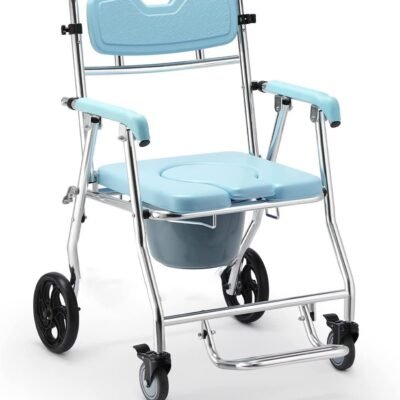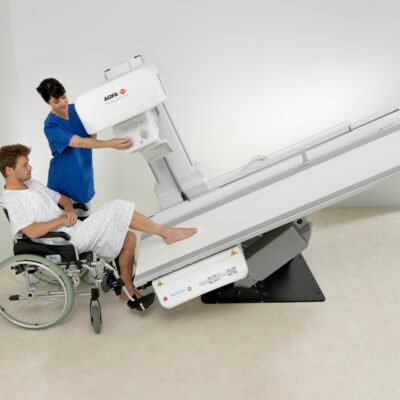Bursitis is soreness of the bursa. Bursae are sacs filled with a gel-like matter that helps reduce friction and pain between bones and soft tissues. There are two bursae in the hip joint, and when the bursa becomes irritated and inflamed, the first symptom is usually pain. It is often acute at first and becomes more chronic over time. Swelling, fever, and redness may also be seen on the thigh. In this article we talk about the Hip Bursitis Exercises to Avoid and what exercise we need to do.
Activities or positions that put pressure on the hip bursa, such as lying down, sitting in one position for long periods of time, or walking, can irritate the bursa and cause more pain. It is also important to learn exercises for hip bursitis so that the condition does not worsen.
Hip Bursitis Treatment
Although things like pain and inflammation medications and steroid injections can be helpful, physical therapy is one of the most important parts of treating hip bursitis. Many people can do exercises at home to treat hip bursitis. But knowing which hip bursitis exercises to avoid is just as important as knowing how to correctly perform supportive exercises.
Many people with hip bursitis have difficulty walking. When bursitis is particularly severe, using a cane or walker will help prevent falls and provide much-needed support to the hip.
Surgery is an option reserved for the most severe cases that have not responded to trials of other techniques (ie physiotherapy, drugs, bursal injections, and assistive devices). Focusing on proper activity and exercise can make a big difference in hip strength and flexibility while reducing pain. But it is equally important to know what exercises to avoid with hip bursitis.
What are the Sign of hip bursitis?
Hip bursitis is the most common cause of hip pain.
Trochanteric bursitis
Trochanteric bursitis often causes pain and tenderness on the outside of the hip and thigh, making it difficult for sufferers to lie on the affected side, often causing trouble sleeping. Trochanteric bursitis also causes a dull, burning pain on the outside of the hip and thigh that often gets worse with a lot of walking, exercising, or climbing stairs. Maissiat’s band syndrome can sometimes mimic or be associated with trochanteric bursitis.
Ischial bursitis
The ischial bursa is located at the top of the buttocks. Ischial bursitis can cause a dull ache in the area that is more noticeable when climbing. The pain occurs from time to time after long-lasting sitting on a solid surface like the ground. Hence the names “bonker’s butt” and “tailor’s butt.”
What exercises should avoid with Hip Bursitis?
If you have hip bursitis, there are a few types of exercise you may want to avoid to give your hip time to heal and allow any inflammation to subside.
First, you’ll want to avoid high-impact activities like running and jumping. These activities put excessive stress on the hip joint and can cause severe pain.
You may want to avoid any weight-bearing exercises when the hip is swollen. Putting weight on your joints further irritates the bursa and can prolong the injury. Activities to avoid: Running, walking, stair climbing, standing bicycling, and weightlifting exercises that stress the hips.
How long does it take to heal Hip Bursitis?
Healing time for hip bursitis varies greatly depending on the severity of symptoms and activity level during healing.
If you have severe hip bursitis with mild inflammation, you may start to see improvement within weeks to months.
For chronic hip bursitis or more severe inflammation, healing may take a little longer. With proper exercises and physical therapy, you should see improvement within several months.
More importantly, you want to make sure to avoid exercises that cause further illness, as this can significantly lengthen the healing time. We know it can be difficult to find time and rest when committing to an exercise regimen. Think long-term: A short-term sacrifice will get you into action faster than trying to resist and persevere with the pain.
Avoid hip stretches
If you have been diagnosed with trochanteric bursitis that does not determine with corticosteroid injections, it is very general and very likely that you too have muscle weakness, also known as tendinopathy.
To understand tendinopathy, it is the gradual onset of outer hip pain and weakness, which causes the outer tendon of the hip to weaken. Our external hip tendons are built as strong rope-like tissue that connects our muscles to our bones. When this tendon is weak, like a highly stretched rope, it doesn’t like to stretch too much, especially over hard surfaces like bone.
Conclusion
Hip bursitis can lead to stiffness and pain around the joint, but it is important to note that bursitis is distinct from arthritis and does not cause true joint pain. The causes of hip bursitis can vary, ranging from non-infectious inflammation due to injury or overuse to less common causes such as infection or crystal deposits. Certain risk factors, such as repetitive activities and pressure on the hip area, can increase the likelihood of developing hip bursitis.
read more: hip bursitis exercises to avoid the worst situation





